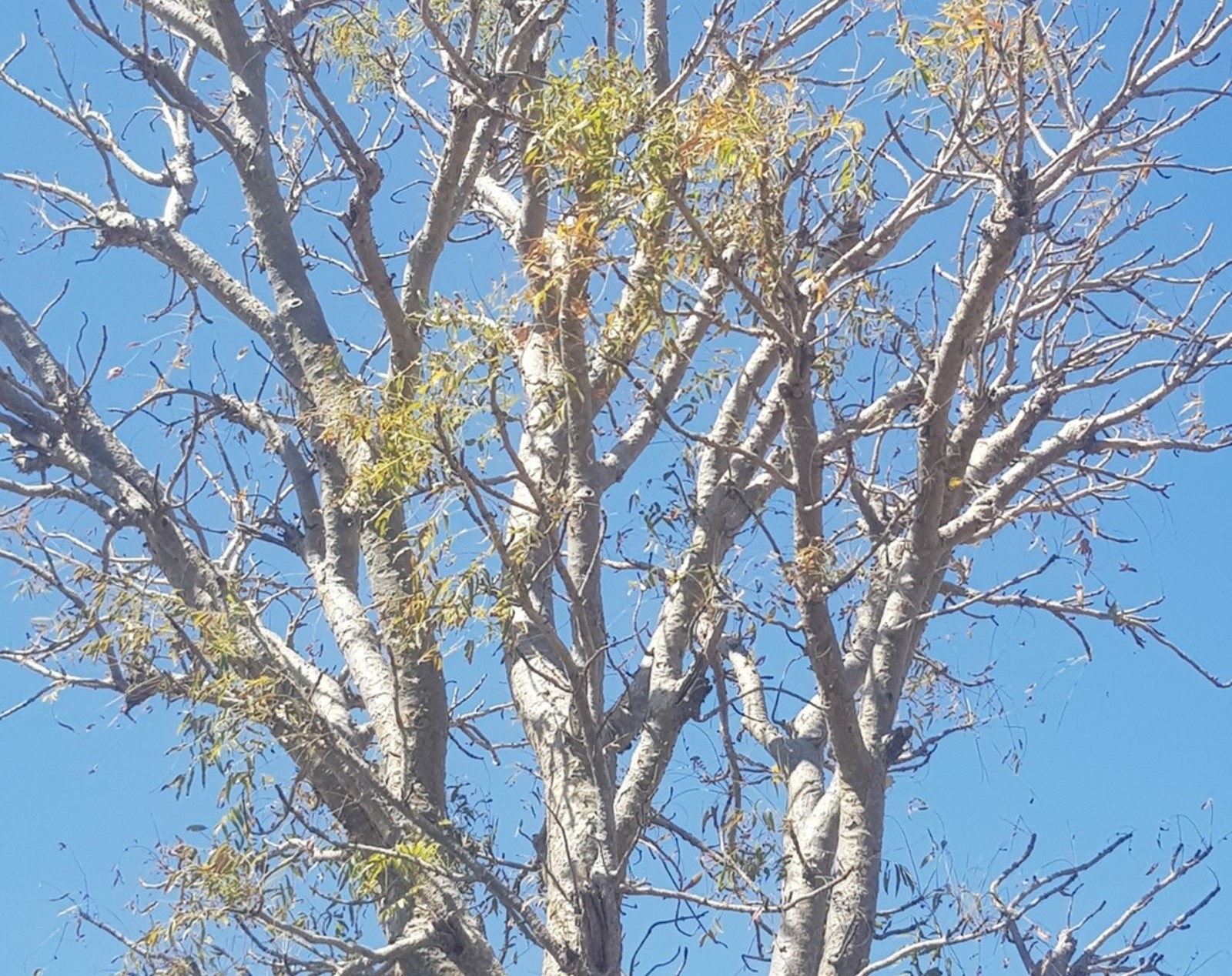Boswellia dalzielii

|
|
Boswellia dalzielii Common Names: Frankincense tree, West African
frankincense, Arbre à encens (French) Scientific
Classification Kingdom: Plantae Clade: Tracheophytes Clade: Angiosperms Clade: Eudicots Order: Sapindales Family: Burseraceae Genus: Boswellia Species: B. dalzielii Synonyms: Boswellia odorata Hutch. Morphological Description Boswellia dalzielii is a deciduous tree, typically 4–15 meters tall,
occasionally reaching 20 meters, with a rounded, open crown. Its key
characteristics include: · Bark: Pale, papery, peeling in ragged strips to reveal greenish
underbark; exudes a fragrant, white oleo-gum-resin that solidifies into resin
(Burkill, 1985). · Leaves: Pinnate, 20–40 cm long, with 7–15 pairs of ovate to
lanceolate leaflets (3–7 cm × 1–3 cm); glossy green, clustered at branch tips
(Fern, 2024). · Flowers: Small (0.5–1 cm), white, fragrant, with red-veined petals,
in axillary or terminal racemes; bloom often before leaves in dry season
(Prance & Jongkind, 2015). · Fruit: Small, pear-shaped drupes (1–2 cm), green turning brown,
containing 1–2 seeds; dispersed by birds (Kew Science, n.d.). Distribution and Habitat Boswellia dalzielii is native to West and Central Africa, thriving in specific
ecological niches: · Geographic Range: Extends from northern Côte d'Ivoire to
southern Mali, northern Nigeria, Cameroon, Benin, Togo, Ghana, Burkina Faso,
and Chad; prevalent in Nigeria’s northern savanna regions (Kew Science, n.d.). · Habitat: Grows in wooded savannas, dry forests, and granitic hills;
prefers dry, shallow, rocky, or sandy soils (pH 5.0–7.0) with 500–1,500 mm
annual rainfall; occurs at elevations up to 1,200 m, often forming pure stands
with Anogeissus leiocarpus (Fern, 2024). · Ecological Role: Provides shade and habitat for wildlife;
resin deters herbivores and insects; contributes to soil stability in savannas
(Burkill, 1985). Ethnopharmacology Boswellia dalzielii is a cornerstone of West African traditional medicine, with
extensive ethnopharmacological validation for its bark, resin, and leaves
(Mongalo et al., 2015): · Anticonvulsant: In Nigeria, stem bark treats epilepsy.
Ethanol bark extract (200 mg/kg) delayed seizure onset in strychnine-induced
convulsions in rats, suggesting GABAergic or opioid receptor activity (Medugu
et al., 2020). · Antidiarrheal: Bark decoctions treat diarrhea in Nigeria. Aqueous bark
extract (50–200 mg/kg) showed no significant protection against castor
oil-induced diarrhea in rats but reduced intestinal motility, supporting
traditional use (Nwinyi et al., 2004). · Antioxidant: Leaf extracts combat oxidative stress in Cameroon. Methanol
leaf extract exhibited DPPH scavenging (IC50: 5.30 mg/L), comparable to vitamin
C, due to high phenolic and flavonoid content (Kohoude et al., 2017). · Anticancer: Root bark is used for tumors in Nigeria. Ethanol root bark
extract inhibited U87 brain tumor cell proliferation (IC50: 20.5 µg/mL) by
inducing apoptosis, validating its use against Ehrlich ascites carcinoma (Lawal
et al., 2012). · Antimicrobial: Bark treats sores and infections in Nigeria. Aqueous bark
extract fractions inhibited Staphylococcus aureus and Escherichia coli, with gallic and protocatechuic acids as key
antibacterial compounds (Alemika et al., 2006). · Antidiabetic: Bark decoctions manage diabetes in Cameroon. Hydroethanolic
bark extract reduced blood glucose and improved lipid profiles in
alloxan-induced diabetic rats, enhancing insulin secretion (Hamadjia et al.,
2024). · Anti-inflammatory: Resin and bark treat rheumatism in
Nigeria. Methanolic bark extract (500 mg/kg) reduced PGE2-induced hyperalgesia
in rats by activating NO/cGMP/ATP-sensitive K+ channels, with boswellic acids
as key compounds (Mbiantcha et al., 2017). ⚠ Toxicity Profile: Boswellia dalzielii is generally safe at therapeutic doses.
Acute toxicity studies showed no mortality or toxicity signs in rats at aqueous
bark extract doses up to 2,000 mg/kg (LD50 > 2,000 mg/kg). Sub-chronic use
may cause mild liver enzyme elevation (ALT increased by 10%). High doses
(>1,000 mg/kg) may lead to gastrointestinal discomfort. Use is
contraindicated in pregnancy and for children due to insufficient safety data.
Potential heavy metal contamination in wild-harvested plants requires caution
(Nwinyi et al., 2004). Phytochemistry The bioactivity of Boswellia dalzielii is driven by its diverse phytochemical
profile, particularly in its resin and bark (Kohoude et al., 2017): · Terpenoids: α-Pinene (21.7–76.6%), α-thujene (2.0–17.6%), myrcene (up to
35.2%), limonene (1.1–32.9%) in resin essential oil; boswellic acids
(β-boswellic acid, acetyl-β-boswellic acid) in resin, with anti-inflammatory
effects (DeCarlo et al., 2019). · Phenolics: Gallic acid, protocatechuic acid, in bark, with
antibacterial and antioxidant properties (Alemika et al., 2006). · Diterpenoids: Incensole, serratol, nephtenol, in resin, contributing to
anti-inflammatory and neuroprotective effects (Alemika et al., 2004). · Flavonoids: Quercetin derivatives, in leaves, enhancing antioxidant
activity (Kohoude et al., 2017). · Saponins: Present in bark, supporting antimicrobial effects (Uzama et
al., 2015). Additional Uses · Cultural: In Nigeria, resin is burned as incense in ceremonies and to
fumigate clothing, repelling insects like mosquitoes (Burkill, 1985). · Pesticidal: Leaves protect stored grains from weevils in Cameroon; resin
used to deter termites on wood (Ngamo et al., 2007). · Ornamental: Planted in northern Nigeria and Burkina Faso for shade and
aesthetic appeal in urban areas (Fern, 2024). · Economic: Resin has potential in fragrance and pharmaceutical
industries, though underexploited compared to Boswellia serrata (DeCarlo et al., 2019). References
External Links More Pictures |
|
| Compounds of Boswellia dalzielii |
|
| References |